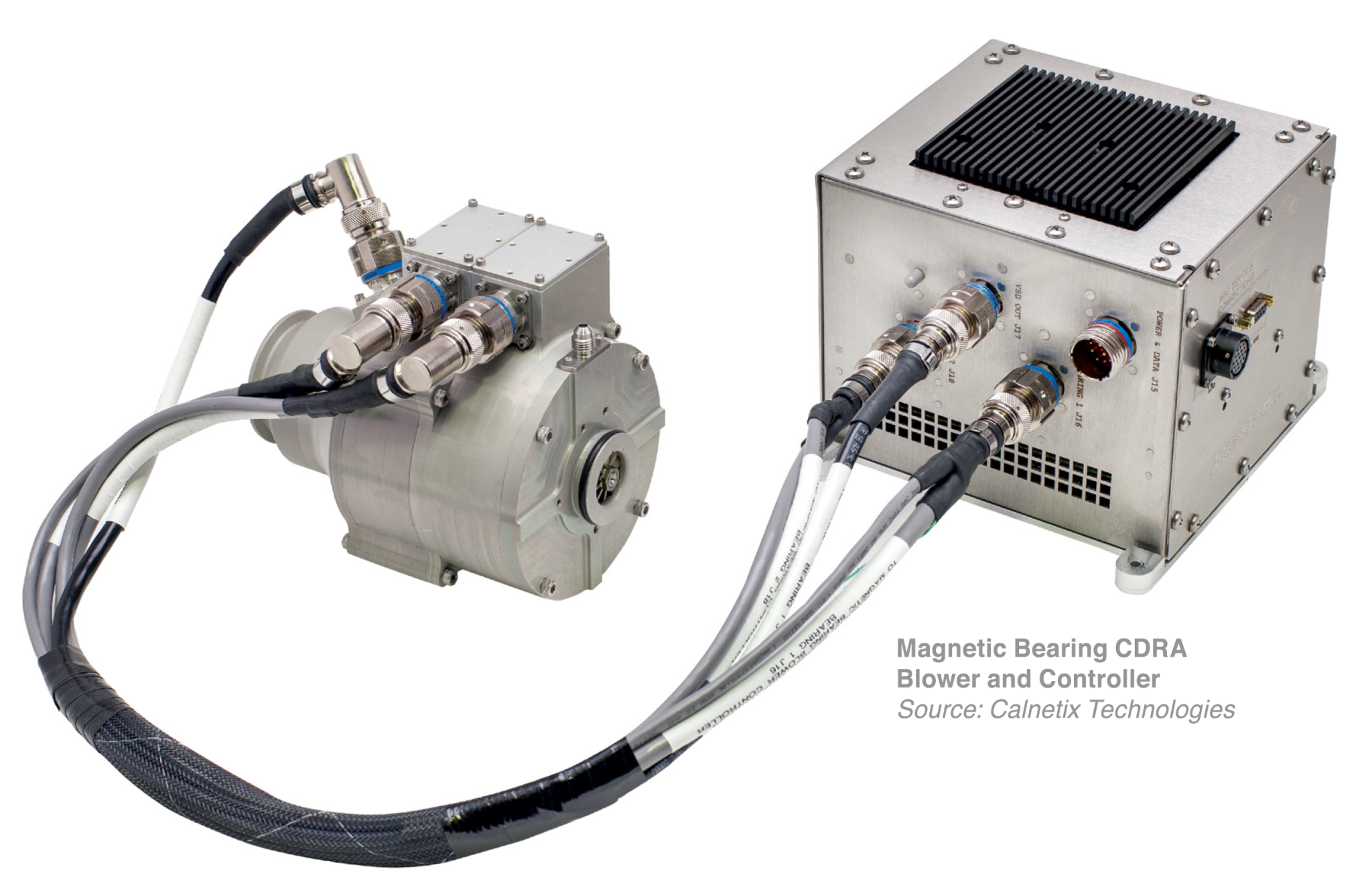Download PDF: Magnetically Levitated Space Mechanisms
Space mechanisms can be loosely defined as any mechanical component or assembly that moves and operates in a space environment. As such, space mechanisms include such mechanical systems as deployable solar arrays, linear actuators, rotary actuators, motors, and gear systems. One of the basic components of many space mechanisms are bearings, and because bearings inherently experience wear over time, rotating space mechanisms have a finite life expectancy. In addition, some space mechanisms have suffered from premature wear, which can jeopardize the success of a mission. For these reasons, there is always a search for longer-life bearing solutions for space mechanisms.
Rolling element bearings have a long space mechanism heritage and are often the first choice in mechanism design. However, for some applications that demand extremely long life or operation where contamination from lubricants (oil and grease) are a concern, magnetic bearings are a potential solution. Magnetic bearings are a relatively recent development that is making significant inroads in large terrestrial machine applications like pipeline pumps and compressors. A few magnetic bearing reaction wheels have been flown, but the technology has not yet gained wide-spread adoption in space, primarily due to concerns regarding cost, mass and reliability. However, in response to various rolling element bearing failures in space mechanisms, the NESC Mechanical Systems Technical Discipline Team has supported the concept of developing magnetic bearing technology for space mechanisms beginning in 2012.
The NESC sponsored an in-depth study of the state of the art in magnetic and other bearing technologies to identify the key pros and cons of each technology. A near-term potential application considered was the ammonia cooling pump on the International Space Station (ISS), which had suffered failure due to wear of its carbon bushings. The NESC study identified the areas where an investment in magnetic bearing technology would be needed to address shortcomings for space mechanisms and concluded that there are no significant technical hurdles that could not be overcome. The review of bearing technologies was eventually published as a NASA TM1.
The NESC-sponsored study inspired a recent demonstration application of magnetic bearings, which is expected to set precedent for future space applications of the technology. A magnetic bearing air blower has been designed, built, tested, and in August 2020 was delivered to NASA MSFC for use in the next generation Carbon Dioxide Removal Assembly (CDRA) aboard the ISS. The current CDRA blower utilizes foil air bearings. Magnetic bearings offer improved resistance to debris in the air stream and the ability to endure vacuum operation can occur during operational anomalies. To accomplish this ISS-funded demonstration project, in 2017, NASA issued a Request For Information seeking design concepts for a CDRA blower. Magnetic levitation was submitted by industry as a potential design that could meet all of the system requirements. A procurement phase for the magnetic bearing blowers was initiated in early 2018. The magnetic bearing blower2 is now undergoing system-level ground testing and is scheduled to be used as the heart of the 4-Bed Molecular Sieve CDRA system. Successful launch and operation on orbit stands to open the door to many future applications of magnetic bearing space mechanisms in future NASA missions. This work was performed at GRC.
For more information, contact:
- Samuel A. Howard, Ph.D. howard@nasa.gov
- Christopher DellaCorte, Ph.D. christopher.dellacorte@nasa.gov
- Michael J. Dube, Ph.D. michael.j.dube@nasa.gov
- Larry Hawkins, Calnetix Technologies larry@calnetix.com
References
-
Howard, S.A., DellaCorte, C., and Dube, M.J., “Magnetic Levitation for Long-Life Space Mechanisms: Technology Assessment and Remaining Challenges,” NASA/TM-2019-220052.
-
Hawkins, L., Filatov, A., Khatri, R., DellaCorte, C., Howard, A., “Design Of A Compact Magnetically Levitated Blower For Space Applications,” ASME Turbo Expo, Paper GT2020-15090, Sept. 2020, London (Virtual).



























